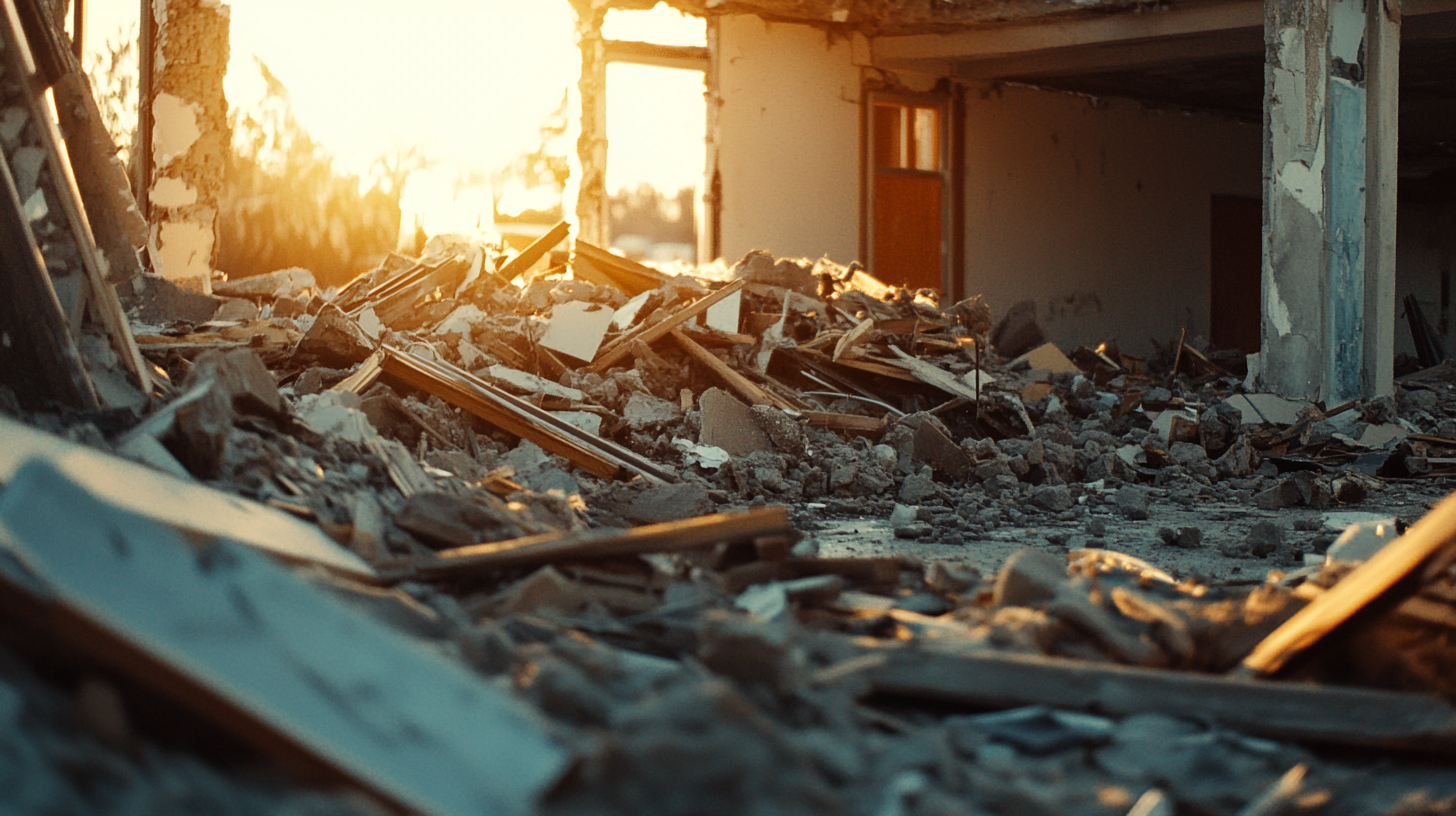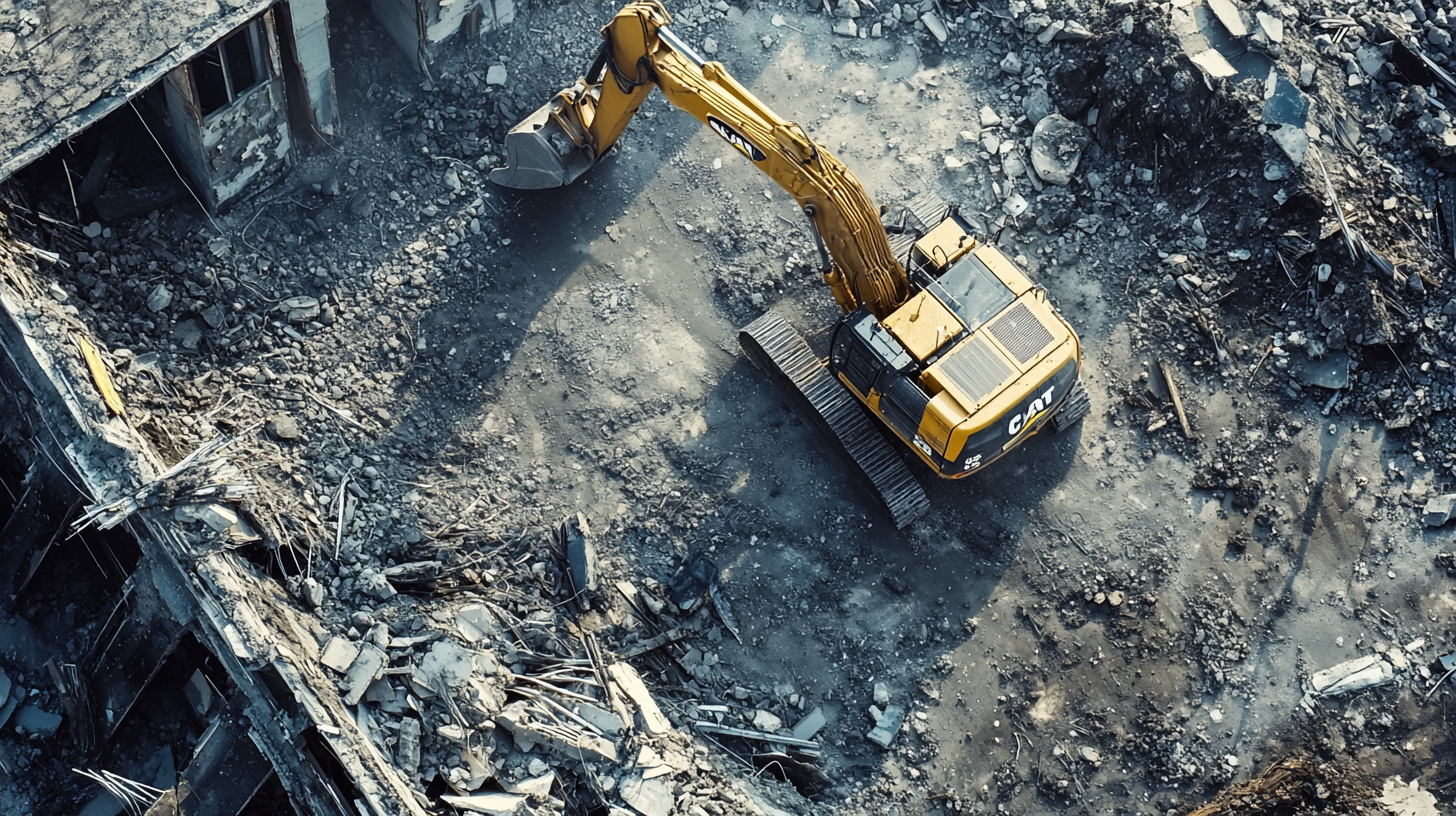
In the quest for more sustainable, comfortable, and cost-effective living and working environments, the choice of insulation material emerges as a pivotal decision with far-reaching implications. Insulation is not just about filling walls and attics; it's a strategic investment in the energy efficiency, environmental impact, and comfort of buildings. With a myriad of insulation options available on the market, each offering different benefits and challenges, selecting the right insulation material becomes a task of paramount importance.
This blog delves into the significance of choosing the appropriate insulation material, exploring how this choice affects not only the thermal performance of buildings but also their energy consumption, carbon footprint, and the well-being of occupants. From traditional options like fiberglass and foam to innovative solutions like aerogel and bio-based materials, understanding the properties, applications, and environmental credentials of each insulation type is crucial for making informed decisions.
The selection of insulation material is influenced by a variety of factors, including climate, building design, specific energy goals, and budget constraints. Beyond the immediate considerations of R-value and thermal resistance, this choice also reflects broader concerns about sustainability, indoor air quality, and long-term cost savings. As we navigate through the complexities of insulation materials, we'll uncover the key considerations that should guide this decision, ensuring that buildings are not only energy-efficient but also healthy and sustainable spaces for occupants.
Join us as we explore the critical importance of selecting the appropriate insulation material, offering insights and guidance to homeowners, builders, and architects. By making informed choices, we can enhance the performance of our buildings, contribute to environmental sustainability, and create comfortable, energy-efficient spaces that meet the demands of today and tomorrow.
Understanding the Basics of Insulation
Insulation is a key component in creating energy-efficient, comfortable living spaces. By delving into the basics of insulation, homeowners can make informed decisions that lead to improved energy efficiency, reduced utility costs, and enhanced indoor comfort. This section explores the fundamental role of insulation in homes and the importance of R-value, followed by an overview of common insulation materials and their respective pros and cons.
The Role of Insulation in Your Home
Explanation of How Insulation Works to Maintain Temperature: Insulation works by slowing the transfer of heat between the interior and exterior of a home. In winter, it traps heat inside, keeping the living space warm, and in summer, it prevents outside heat from entering, maintaining a cooler indoor environment. This thermal barrier is crucial for minimizing the reliance on heating and cooling systems, thereby reducing energy consumption and enhancing comfort.
The Importance of R-value in Measuring Insulation Effectiveness: The R-value is a measure of an insulation material's resistance to heat flow. The higher the R-value, the better the material's insulating properties. Selecting insulation with the appropriate R-value for your climate and the specific part of your home is essential for achieving optimal energy efficiency. Understanding R-value helps homeowners choose the right insulation material to meet their needs effectively.
Types of Insulation Materials
Overview of Common Insulation Materials (Fiberglass, Foam, Wool, etc.): There are several types of insulation materials available, each with unique characteristics:
- Fiberglass: Made from fine glass fibers, fiberglass is one of the most commonly used insulation materials. It's affordable, non-flammable, and effective in a wide range of climates.
- Foam: Foam insulation, including spray foam and rigid foam boards, offers high R-values and excellent air sealing capabilities. It's particularly effective in preventing air leaks.
- Wool: Wool insulation, made from natural fibers, provides good thermal and acoustic insulation. It's environmentally friendly and can absorb moisture without losing insulating properties.
Pros and Cons of Each Material Type: Each insulation material has its advantages and disadvantages:
- Fiberglass is cost-effective and easy to install but requires protective gear during installation due to the irritation it can cause to skin and lungs.
- Foam provides superior insulation and air sealing but can be more expensive and may require professional installation for optimal performance.
- Wool is sustainable and offers moisture control but can be costlier than synthetic materials and may not be as widely available.
Factors to Consider When Choosing Insulation
Selecting the right insulation is a pivotal decision that can significantly impact the energy efficiency, comfort, and overall sustainability of a building. Understanding the various factors that influence this choice is crucial for making an informed decision. This section explores how climate affects insulation needs, the importance of R-value, and the special considerations required for insulating different areas of a home.
Climate and R-Value Requirements
How Climate Affects Insulation Choice: The climate in which a building is located plays a significant role in determining the appropriate type and amount of insulation required. In colder climates, higher R-value insulation is necessary to retain heat within the building, while in warmer climates, insulation should focus on keeping heat out. Selecting insulation that is suited to your climate zone ensures that your home remains comfortable throughout the year and helps in reducing energy costs.
Understanding R-value Needs Based on Your Location: R-value measures an insulation material's resistance to heat flow, with higher values indicating better insulating effectiveness. The required R-value for your home largely depends on your geographic location, as different climate zones have varying insulation needs. Consulting local building codes can provide guidance on the minimum R-value recommended for your area, helping you choose insulation that meets or exceeds these requirements for enhanced energy efficiency.
Area of the Home Being Insulated
Special Considerations for Attics, Walls, Basements, and Crawl Spaces: Each area of a home has unique insulation needs:
- Attics often require high R-value insulation to prevent heat loss through the roof, especially in colder climates. Ventilation should also be considered to prevent moisture accumulation.
- Walls are integral to maintaining a home's thermal envelope. Insulation here should balance thermal resistance with moisture management to prevent condensation within wall cavities.
- Basements and Crawl Spaces can be prone to dampness. Insulation materials that also offer moisture resistance are ideal for these areas to prevent mold growth and ensure a healthy living environment.
Recommended Materials for Each Area: While many insulation materials can be used in various parts of a home, some are better suited to specific areas:
- Fiberglass and Cellulose are commonly used in attics and walls due to their versatility and cost-effectiveness.
- Spray Foam is particularly effective in sealing gaps and insulating irregular spaces, making it ideal for basements, crawl spaces, and hard-to-reach areas in walls.
- Rigid Foam Boards offer excellent thermal resistance and moisture protection for basement walls and under slab insulation.
Comparing Insulation Materials
Choosing the right insulation material is crucial for enhancing the energy efficiency, comfort, and overall sustainability of buildings. This section provides a comparative analysis of fiberglass, foam insulation (including spray and rigid foam), and wool along with other natural insulations, highlighting their unique properties, applications, and considerations.
Fiberglass Insulation
Characteristics: Fiberglass insulation, made from fine strands of glass fibers, is known for its thermal resistance and sound absorption capabilities. It's available in batts, rolls, and loose-fill forms, making it versatile for various applications.
Ideal Use Cases: Fiberglass is most commonly used in attics, walls, and floors due to its ease of installation and cost-effectiveness. It's suitable for both new construction and retrofit projects, providing a reliable insulation solution that fits a wide range of budgets.
Things to Watch Out For: While fiberglass insulation is effective, it can irritate the skin, eyes, and respiratory system during installation. Proper safety gear is essential. Additionally, it should be kept dry to maintain its insulating properties, as moisture can significantly reduce its effectiveness.
Foam Insulation (Spray and Rigid Foam)
Characteristics: Foam insulation comes in two main types: spray foam and rigid foam boards. Spray foam expands to fill gaps, providing an excellent air seal, while rigid foam boards offer high R-values and moisture resistance.
Ideal Use Cases: Spray foam is ideal for sealing air leaks and insulating irregular spaces, making it perfect for attics, crawl spaces, and around windows and doors. Rigid foam is often used for exterior wall insulation, basement walls, and under slabs, where its moisture resistance and thermal properties are particularly beneficial.
Things to Watch Out For: Foam insulation, especially spray foam, can be more expensive than other types and may require professional installation. Some formulations of spray foam release volatile organic compounds (VOCs) during application, necessitating proper ventilation.
Wool and Other Natural Insulations
Characteristics: Natural insulations like wool, cellulose (made from recycled paper), and hemp are eco-friendly alternatives that offer good thermal and acoustic insulation. Wool, in particular, can regulate moisture, improving indoor comfort and air quality.
Ideal Use Cases: Natural insulations are well-suited for environmentally conscious projects, retrofitting older homes, and areas where moisture management is a priority. They can be used in walls, attics, and floors, offering a sustainable choice without compromising on performance.
Things to Watch Out For: While offering environmental benefits, natural insulations can be more expensive than synthetic options and may have lower R-values per inch. Availability can also be an issue, as these materials are not as widely distributed as fiberglass or foam.
Environmental Impact and Health Considerations
In the pursuit of energy efficiency and comfort in buildings, the choice of insulation material also brings into focus important environmental and health considerations. This section explores the realm of eco-friendly insulation options, their broader benefits, and the health and safety aspects that homeowners and builders should be aware of.
Eco-Friendly Insulation Options
Overview of Sustainable and Green Insulation Materials: The market offers a variety of insulation materials that are not only effective in reducing energy consumption but also have a lower environmental impact. Sustainable insulation options include materials like cellulose, made from recycled paper; wool, which is natural and renewable; and hemp, known for its low environmental footprint. These materials are often produced using less energy and can be recycled or composted at the end of their life cycle, contributing to a circular economy.
Benefits Beyond Energy Efficiency: Eco-friendly insulation materials offer several benefits beyond their primary function of reducing energy use. They contribute to healthier indoor air quality by minimizing the release of volatile organic compounds (VOCs) and other pollutants. Additionally, their production and disposal processes are designed to have minimal environmental impact, supporting biodiversity and reducing waste. By choosing sustainable insulation, homeowners can contribute to global environmental conservation efforts while enjoying a comfortable and healthy living space.
Health and Safety Aspects
Potential Health Risks Associated with Certain Insulation Materials: While insulation is key to energy-efficient buildings, some traditional insulation materials can pose health risks. For example, fiberglass insulation fibers can irritate the skin, eyes, and respiratory system upon contact. Certain types of foam insulation may release harmful chemicals during application and curing processes. Awareness of these potential health risks is crucial for making informed choices about insulation materials.
Safety Measures During Installation: To mitigate health risks associated with insulation installation, several safety measures should be observed:
- Personal Protective Equipment (PPE): Wearing appropriate PPE, such as gloves, long sleeves, masks, and goggles, can protect against irritation and exposure to harmful substances.
- Ventilation: Ensuring proper ventilation during and after the installation of certain types of insulation, especially spray foam, can help disperse any harmful vapors or chemicals released.
- Professional Installation: For insulation materials that require special handling or pose higher health risks, professional installation by trained and equipped experts can ensure the job is done safely and effectively.
Professional Installation vs. DIY
The decision between professional insulation installation and DIY can significantly impact the effectiveness of your insulation, overall energy savings, and safety. Understanding when to call in the professionals and when a DIY approach is feasible is crucial for homeowners looking to improve their home's energy efficiency.
When to Call the Professionals
Scenarios Where Professional Installation is Recommended: Certain insulation projects require the expertise, tools, and knowledge that only professionals can provide, especially in the following scenarios:
- Complex Installations: Areas with complex geometries, such as attics with numerous obstructions or homes with irregular framing, often require the precision that professional installers offer.
- Spray Foam Insulation: Due to the chemicals involved and the need for precise application, spray foam insulation almost always necessitates professional installation to ensure safety and effectiveness.
- Building Code Compliance: Professionals are familiar with local building codes and can ensure that your insulation meets all legal requirements, avoiding potential issues down the line.
How to Find and Choose a Reliable Contractor: Finding a trustworthy contractor involves several steps:
- Research: Start with an online search for local insulation contractors with good reviews. Platforms like the Better Business Bureau can also provide valuable insights into a contractor's reputation.
- Certifications and Licenses: Verify that the contractors are certified and licensed to perform insulation work in your area. Certifications from industry organizations can be a good indicator of their commitment to quality.
- Quotes and References: Obtain multiple quotes to compare prices and ask for references from past clients to gauge their satisfaction with the contractor's work.
DIY Insulation Tips
Situations Suitable for DIY: DIY insulation projects can be successful in less complex scenarios, such as:
- Adding Insulation to Attics: If access is straightforward and there are few obstructions, laying additional batts or rolls of insulation can be a manageable DIY project.
- Insulating Basements with Rigid Foam Boards: Installing rigid foam insulation on basement walls is a relatively straightforward process that can be tackled by homeowners.
Resources and Guidelines for Safe and Effective DIY Installation: To ensure a successful DIY insulation project, consider the following resources and guidelines:
- Educational Materials: Utilize online tutorials, videos, and manufacturer's instructions specifically designed for homeowners. Many insulation manufacturers provide detailed guides on how to install their products.
- Safety Gear: Always use appropriate safety gear, including gloves, goggles, and masks, to protect against irritants and harmful substances.
- Building Codes: Familiarize yourself with local building codes related to insulation to ensure your project complies with all regulations.
FAQs
Contact Bull City Crawlspace Today!
Bull City Crawlspace will do everything we can to ensure your experience with us is excellent.
Request A FREE Estimate
Request a Free Estimate Form
Checkout Recent Post




Got a Question? We’re Here to Help.
You can arrange an appointment or make an enquiry by phone or email, orget in touch to us via our contact form.

